We are standing at the threshold of the most significant transformation in finance since the invention of the spreadsheet. Artificial Intelligence isn’t a future concept — it’s here — quietly rewriting how finance teams plan, decide, and perform. And yet, despite the global AI boom, 95% of enterprise AI initiatives fail to deliver measurable impact. Not because the technology falls short, but ...
- The CFO's AI Playbook : From Ah-Ha to Acceleration
- Octane’s AI Contract Analyser & Ask Procurement Portal: Transforming Contract Review for Modern Enterprises
- Transform Enterprise Performance with IBM Analytics and AI Solutions
- IBM Planning Analytics AI assistant - revolutionising business planning with artificial intelligence
- Dipping your toes into AI in Finance with Watson Orchestrate: A Step-by-Step Journey
- ChatGPT for Enterprise: Reimagine how works gets done with AI powered automation
We are standing at the threshold of the most significant transformation in finance since the invention of the spreadsheet. Artificial Intelligence isn’t a future concept — it’s here — quietly rewriting how finance teams plan, decide, and perform.
And yet, despite the global AI boom, 95% of enterprise AI initiatives fail to deliver measurable impact. Not because the technology falls short, but because most organisations stop too soon. They automate tasks but never redesign the system.
At Octane Solutions, we’ve worked with over 100 finance teams across APAC — and we’ve seen what separates the few that scale from the many that stall. The secret is simple but profound: structure before scale.
From Industrial Revolution to Intelligent Finance



When electricity first arrived in the 19th century, factories did what seemed logical — they replaced gas lamps with electric bulbs. Workplaces became brighter and safer, but not smarter. The true revolution began when they redesigned entire production lines around electric motors, unleashing a new era of efficiency and innovation.
Finance today stands at a similar crossroads.
Chatbots, copilots, and summarisation apps are our lightbulbs — illuminating the potential of AI but not transforming how work gets done. The real breakthrough will come with Agentic AI — a new generation of intelligent systems that reason, coordinate, and act autonomously across the finance ecosystem.
Agentic AI doesn’t just automate; it orchestrates. It doesn’t replace people; it amplifies them. And for the CFO, that means the finance function can finally shift from explaining the past to predicting — and shaping — the future.
The CFO’s Challenge: Insight at the Speed of Business
CFOs today face a dual reality:
- The demand for immediacy: real-time forecasting, continuous scenario analysis, and rolling insights.
- The constraint of legacy: manual reconciliations, fragmented data, and static planning cycles.
Most finance teams have automated fragments of their process — but not the process itself. Reporting is faster, but not necessarily smarter. True transformation happens only when AI becomes part of the fabric of finance — not an add-on.
Below are 6 opportunities now emerging as AI evolves from simple LLMs to self-governing, multi-agent ecosystems:
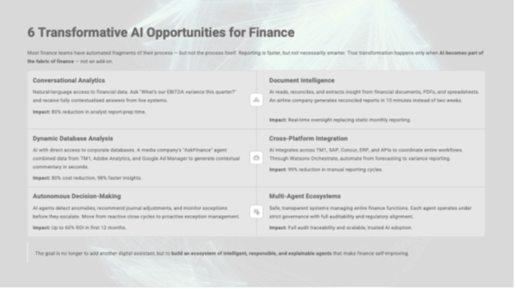
- Conversational analytics and natural-language access to financial data. Finance teams can now ask a question — “What’s our EBITDA variance this quarter?” — and receive a fully contextualised, narrative answer drawn from live systems.
By eliminating manual report preparation, CFOs gain faster clarity and sharper storytelling for stakeholders.
Impact: 80% reduction in analyst report-prep time and faster decision support across FP&A.
- AI that reads, reconciles, and extracts insight from financial documents, PDFs, and spreadsheets.
An airline company uses AI agents linked to Planning Analytics and Excel sources to generate reconciled financial reports in 10 minutes instead of two weeks.
Impact: Continuous visibility into financial performance, replacing static monthly reporting with real-time oversight.
- AI with direct access to corporate databases, enabling dynamic analysis. For a Media company, Octane’s “AskFinance” agent combined data from TM1, Adobe Analytics, and Google Ad Manager to generate contextual financial commentary in seconds.
Impact: 80% reduction in report-generation cost and 98% faster access to narrative insights — AI that doesn’t just calculate but explains why.
- AI that integrates across finance platforms — TM1, SAP, Concur, ERP, and APIs — to coordinate entire workflows. Through Watsonx Orchestrate, CFOs can now automate the entire chain from forecasting to variance reporting: “Generate a cashflow forecast and alert me if OPEX exceeds budget by 5%.” AI handles retrieval, validation, and communication autonomously.
Impact: 99% reduction in manual reporting cycles; faster consolidation, real-time alerts, and seamless cross-system collaboration. - Autonomous decision-making within governed boundaries. AI agents now detect anomalies, recommend journal adjustments, and monitor exceptions before they escalate. This allows finance functions to move from reactive close cycles to proactive exception management.
Impact: Predictive close cycles, risk reduction, and up to 60% ROI in the first 12 months of deployment.
- Safe, transparent, multi-agent ecosystems that manage entire finance functions. Each agent — whether a “forecast bot,” “audit bot,” or “reporting bot” — operates under strict governance, with auditability, explainability, and regulatory alignment. Octane’s enterprise rollout playbook embeds SOC2, GDPR, and financial reporting controls into every workflow.
Impact: Full audit traceability, regulator-ready documentation, and scalable, trusted AI adoption.
The CFO’s now need to realise that their goal is no longer to add another digital assistant, but to build an ecosystem of intelligent, responsible, and explainable agents that make finance self-improving. This shift isn’t about hype or replacing people. It’s about constructing a resilient, data-driven finance engine that learns, adapts, and optimises continuously — from planning to forecasting to audit.
Agentic AI marks the true turning point of the finance— moving beyond automation to orchestration, where decisions are made faster, risks are mitigated earlier, and value is created intelligently.
The 9 Principles Behind Successful AI Transformation
Through 100+ modernisation projects, Octane has distilled nine practices that consistently deliver value:
1. Align AI to Business Impact – Focus on measurable outcomes, not pilots.
2. Build a Finance AI Centre of Excellence – Unite Finance, IT, and Operations under a single vision.
3. Invest in Skills, Not Just Software – Equip people to interpret, question, and guide AI.
4. Adopt Adaptive Governance – Control risk without stifling innovation.
5. Prioritise Data Quality – No AI can outperform bad data.
6. Start with Use Cases – Identify problems before choosing platforms.
7. Automate the Mundane – Free people for creative and strategic work.
8. Measure by Business Outcomes – Look beyond cost savings to agility, accuracy, and trust.
9. Scale Proven Success – Replicate what works across divisions.
Transformation begins with clarity, not complexity.The Foundation of Trust and Scale: IBM
AI’s potential means nothing without trust. That’s why Octane’s partnership with IBM is central to every finance transformation journey.
Built on IBM’s Agentic AI Platform this foundation ensures that CFOs can modernise with confidence — embedding explainability, governance, and measurable ROI from day one. IBM’s Watsonx Orchestrate (Agentic AI Platform) is a key enabler. It uses intelligent digital workers to automate complex workflows, from reconciliations to board-pack creation. With embedded governance, it’s designed to keep humans in control while machines handle the heavy lifting.
Explore: IBM Watsonx Orchestrate →
Agentic AI: From Automation to Orchestration
IBM’s Agentic AI Frameworks mark a shift from tools to systems — from automating tasks to orchestrating end-to-end business outcomes.
They include:
-
Agent Development Lifecycle (ADLC): The governance backbone for building responsible agents.
-
Model Context Protocol (MCP): A transparent standard for open, explainable AI.
-
Hybrid-First Architecture: Ensures flexibility across cloud, on-prem, and edge.
This architecture doesn’t just make AI smarter — it makes it sustainable.
Learn more: Agentic AI Frameworks →
Anthropic + IBM: Responsible AI for Regulated Finance
IBM’s partnership with Anthropic brings the Claude family of models into the Watsonx ecosystem — marrying safety and sophistication.
This enables CFOs to deploy AI assistants that:
- Generate narrative financial reports in natural language.
- Automate forecasting and scenario modelling.
- Support reconciliations and anomaly detection within governed environments.
It’s AI that works like a trusted analyst — intelligent, auditable, and always under your control.
Read more: IBM–Anthropic Partnership →
Groq + IBM: Redefining Speed and Efficiency
AI adoption often stalls on cost and latency. Groq changes that.
By integrating Groq’s high-speed LPU architecture into Watsonx Orchestrate, IBM delivers 5× faster inference and 80% lower compute cost — without compromising security.
This is the infrastructure that turns AI pilots into production systems.
Octane + IBM: The Partnership That Delivers
Octane’s partnership with IBM isn’t symbolic — it’s operational. Our IBM Champions work hand-in-hand with IBM’s product and engineering teams to co-create real-world use cases for finance.
From FP&A to supply chain modelling, Octane helps clients deploy AI-ready cubes, design agentic workflows, and establish continuous improvement frameworks that evolve with business needs.
Our Global support models — Octane Black and Octane Blue — offer CFOs flexible, SLA-backed coverage that reduces total cost of ownership by up to 35%.
AI success isn’t about pilots — it’s about discipline, design, and delivery.
summary, The Cognitive Finance Function- The finance team of the future will not just report performance — it will anticipate, optimise, and advise.
It will be:
- Predictive, not reactive.
- Autonomous, not manual.
- Augmented, not overloaded.
- Connected, not siloed.
- Trusted, not opaque.
This is The Cognitive Finance Function — powered by AI, governed by design, and aligned with enterprise strategy.
What Next?
AI in finance isn’t about technology — it’s about transformation. The winners will be those who move beyond experiments to execution, designing their finance operations for intelligence, not just automation. As we head towards 2026, it's vital that your finance strategic plans are set and able to be easily communicated for impact.
Octane and IBM are helping CFOs make that leap — securely, measurably, and fast.
Book a strategy session with Octane to explore your AI-in-Finance roadmap and we’ll walk you through the below practical Roadmap to Building an Intelligent Finance Function

Sign up for a 30-day free

Diagnose — Identify Where AI Can Create Meaningful Impact
Design — Combine Orchestration with Human Judgment
Deploy — Start Small, Prove Fast, Scale Wisely
Demonstrate — Quantify ROI and Institutionalise Learnings
Differentiate — Make Finance the Intelligent Core of the Enterprise
Final Thought: From Lightbulb to Lighthouse
The future of finance belongs to leaders who don’t just turn on AI — they design for it. CFOs who embed intelligence, governance, and agility into their finance DNA will redefine how value is created and measured
Procurement teams today are under pressure to move faster, reduce risk, and operate with greater transparency. Yet contract review — one of the most critical procurement responsibilities — remains slow, manual, and highly inconsistent across most organisations.
A major enterprise client came to Octane facing exactly this challenge. Their procurement function was overwhelmed: contracts were buried in inboxes, reviews took hours, and comparing updated versions created delays and negotiation blind spots.
Octane delivered a powerful, AI-enabled solution using IBM WatsonX Orchestrate — combining a Contract Analyser with an intelligent Ask Procurement interface. Together, these capabilities have redefined how the client manages contract intake, review, insights, and procurement intelligence at scale.

The Business Challenge
The client’s procurement team was experiencing significant bottlenecks:
-
Contract overload and inbox chaos
Supplier agreements arrived via email and were often lost or delayed, slowing downstream purchasing decisions.
-
Time-consuming manual analysis
Procurement staff could spend 1–3 hours per contract summarising content, identifying risks, and preparing commentary for stakeholders.
-
Difficulty comparing contract versions
Updated supplier contracts required line-by-line manual comparison, often leading to missed red flags and weaker negotiation leverage.
-
Limited visibility into procurement insights
Leaders had no quick way to query procurement data, trends, supplier risks, or anomalies.
These issues created avoidable risk, slowed procurement cycles, and stretched team capacity.
The Octane Solution: AI-Enabled Contract Analyser + Ask Procurement
Octane deployed a streamlined, automated solution powered by IBM WatsonX Orchestrate that addresses both contract processing and procurement intelligence.
✔ AI Contract Analyser
The analyser automatically:
-
Captures new supplier contracts the moment they appear in email
-
Extracts and understands contract text
-
Summarises key clauses and obligations
-
Identifies risks, red flags, and missing components
-
Highlights differences between contract versions
-
Generates a negotiation playbook
-
Delivers insights to stakeholders instantly
This means procurement teams no longer read contracts line-by-line — the AI does the heavy lifting.
✔ Ask Procurement: AI interface for procurement intelligence
As part of the deliverable, Octane introduced Ask Procurement, a conversational AI interface that allows users to:
-
Query procurement data
-
Identify spend trends
-
Detect anomalies in contracts or vendors
-
Access historical contract insights
-
Surface negotiation patterns
-
Review supplier performance indicators
Whether it’s “Show me all suppliers with auto-renewal clauses” or “Summarise risk trends for our top five vendors,” Ask Procurement provides instant answers.
Together, these tools create a true digital procurement co-pilot.
The Impact for the Client
The benefits have been significant and immediate:
-
Review time reduced to under a minute
What previously took hours now happens automatically — contracts are analysed, summarised, and compared in seconds.
-
Reduced legal and commercial risk
The AI produces a structured risk register, helping teams spot issues earlier and make more informed decisions.
- Stronger negotiation positions
The system highlights:
-
What changed between versions
-
Why it matters
-
Recommended negotiation arguments
This gives the procurement team a consistent, data-driven advantage.
-
Faster procurement cycle times
Automated intake and instant insights have removed bottlenecks, improving:
- Supplier onboarding
- Purchase approvals
- Contract turnaround times
-
No more lost contracts
The AI automatically captures, stores, and processes every attachment.
-
Improved organisational intelligence
With Ask Procurement, leaders now have:
-
Instant visibility
-
Searchable procurement knowledge
-
On-demand insights
-
Clear trend analysis
This shifts procurement from reactive to proactive.
Why This Matters
This project demonstrates what applied enterprise AI looks like in the real world — practical, operational, and immediately beneficial.
It shows how organisations can:
-
Modernise procurement without replacing systems
-
Automate high-effort tasks with intelligent workflows
-
Strengthen compliance and governance
-
Provide teams with insights previously locked away in documents
-
Use AI as an everyday digital procurement analyst
It also reinforces that AI is not only for futuristic use cases — it is delivering meaningful value today.
What’s Next: Full Lifecycle Automation with E-Signature
The next extension is already underway:
AI-driven e-signature workflows, enabling:
-
Automated signing
-
Routing and approval
-
Audit trails
-
Archiving and version control
This will close the loop across the entire procurement lifecycle:
Intake → Review → Insights → Decision → Signature → Storage
Conclusion
Octane’s AI Contract Analyser and Ask Procurement portal offer a new way forward for procurement teams looking to accelerate productivity, reduce risk, and enhance decision-making.
By combining IBM WatsonX Orchestrate, structured AI reasoning, and deep procurement expertise, Octane has delivered a real-world, production-ready solution that transforms how contracts — and procurement intelligence — are managed at scale.
If you'd like to explore how this could work inside your organisation, the Octane team is ready to demonstrate what’s possible.
In today’s volatile business landscape, agility is no longer a competitive advantage—it’s a necessity. True agility means moving beyond fast response to actively anticipating market shifts and seamlessly aligning people, processes, and technology to act decisively.
.png?width=595&height=341&name=From%20Insight%20to%20Impact%20(1).png)
Enterprises possess vast troves of data, yet the ultimate differentiator is the ability to transform that data into actionable insights and automated, intelligent decisions. At Octane Analytics, we are driving this transformation across industries by evolving disconnected reporting tools into a unified, intelligent ecosystem powered by IBM's premier analytics and AI platforms.
The Unified Framework for Intelligent Decisions
IBM’s comprehensive suite of solutions—including Planning Analytics, Cognos Analytics, SPSS, Decision Optimisation, Controller, and Watsonx Orchestrate—delivers a connected framework that manages business performance from strategic vision through to operational execution. This integration establishes a data-to-decision continuum where insights fluidly integrate into planning, execution, and automation cycles.
- IBM Planning Analytics moves organisations beyond static budgeting to dynamic, driver-based forecasting and scenario modelling.
- IBM Cognos Analytics empowers business users with AI-driven dashboards and visualisation tools for deep insight exploration.
- IBM SPSS integrates statistical precision and data science into business planning, ensuring predictions are rooted in reliable data, not intuition.
- IBM Decision Optimisation models complex business scenarios to identify the most efficient and optimal outcomes.
- IBM Controller simplifies and automates financial consolidation, closing, and regulatory reporting.
- IBM Watsonx Orchestrate enables non-developers to automate repetitive workflows, directly connecting insights to business action without writing code.
The Pivot to Predictive and Prescriptive Analytics
Many organisations remain reactive, focused on analysing "what happened." The step-change in performance occurs when analytics shift to answering the crucial questions: “what will happen?” (Predictive) and “what should we do about it?” (Prescriptive).
The integrated IBM ecosystem facilitates this critical shift:
-
Prediction Informs Strategy: Predictive models built in SPSS directly inform forecasts within Planning Analytics, making financial and operational plans immediately responsive to market shifts.
-
Prescription Optimises Action: Decision Optimisation identifies the best sequence of actions to achieve a business goal, operating within specified constraints.
-
Automation Operationalises Insight: Watsonx Orchestrate then automates the prescribed follow-up actions—whether triggering workflows in HR, Finance, or Operations—significantly boosting responsiveness and reducing manual workload
This synergy elevates the organisation from merely data-driven to decision-driven, where insights are not just observed but fully operationalised.
AI and Automation: Transforming Finance and Operations
Automation is no longer confined to the IT department. Today, modern CFOs, HR executives, and department leaders are leveraging agentic AI to offload repetitive, high-volume tasks and achieve new levels of efficiency.
Consider the impact across key functions:
- Financial Performance Management: Imagine a Finance Manager who automatically receives consolidated reports prepared by the IBM Controller, reviewed with AI-assisted insights from Cognos Analytics, and validated against dynamic budget forecasts from Planning Analytics.
- Intelligent HR Operations: A People Leader uses Watsonx Orchestrate to streamline repetitive HR tasks—from scheduling interviews and summarising resumes to ensuring records are instantly updated across all ERP systems.
At Octane Analytics, we specialise in designing and deploying these agentic AI ecosystems, ensuring automation amplifies human capability and drives measurable outcomes.
Why Choose Octane Analytics?
As an IBM Gold Partner, Octane Analytics offers deep, specialised expertise in integrating and optimising IBM’s entire performance management stack.
Our approach is centred not just on product deployment, but on measurable business outcomes: enhanced agility in planning, increased accuracy in forecasting, greater efficiency in reporting, and empowerment through automation.
Whether your immediate need is strategic financial consolidation or a full-scale enterprise performance management overhaul, our team provides the expertise to define the roadmap, deliver the integrated solution, and ensure a demonstrable Return on Investment (ROI).
The Future: A Connected, AI-Powered Enterprise
The future of enterprise performance hinges on connected intelligence—an environment where AI and analytics continuously learn, adapt, and act across all business functions.
Organisations that master this integrated, AI-first approach will not only achieve operational efficiency but also build unparalleled resilience and foresight in a rapidly changing global market. At Octane Analytics, we are committed to helping enterprises realise this future, one intelligent decision at a time.
Let’s Build the Intelligent Enterprise Together
If you are exploring how integrated AI, advanced analytics, and automation can significantly elevate your business performance, we invite you to connect with us. Our team can provide tailored, real-world use case demonstrations—from predictive planning to automated workflow execution—all powered by IBM’s market-leading technology.
📩 Reach out to Octane Analytics today to schedule a discovery session.
IBM Planning Analytics AI assistant - revolutionising business planning with artificial intelligence
In today’s fast-paced business environment, companies are constantly looking for ways to streamline their operations, improve decision-making, and stay ahead of the competition. One of the tools that has gained significant attention in the world of business intelligence and analytics is IBM Planning Analytics, which harnesses the power of AI to enhance financial planning, forecasting, and reporting. One of the standout features of IBM Planning Analytics is its AI Assistant, an innovative tool that leverages artificial intelligence to provide smarter, more efficient planning and analytics capabilities.

In this blog, we’ll dive into the key features of the IBM Planning Analytics AI Assistant and explore how it is transforming business planning for organisations around the world.
What is IBM Planning Analytics AI Assistant?
IBM Planning Analytics is a cloud-based solution designed to help businesses automate their planning, budgeting, forecasting, and analysis processes. The AI Assistant embedded within the platform brings cognitive capabilities to the table, making it more intuitive and user-friendly.
The AI Assistant uses natural language processing (NLP) and machine learning algorithms to understand and respond to user queries in plain language, enabling business users—whether financial analysts, planners, or executives—to interact with the system more naturally. Instead of relying on complex formulas or spending hours running reports, users can simply ask questions like, "What was our sales growth in Q3?" or "How much did our expenses increase year-over-year?" The AI Assistant then processes these requests and provides quick, data-driven insights.

Key Features of IBM Planning Analytics AI Assistant
-
Conversational analytics
One of the most impressive features of the AI Assistant is its ability to enable conversational analytics. Traditionally, getting insights from business intelligence tools involved navigating through multiple layers of data, setting up reports, or writing complex queries. The AI Assistant eliminates this complexity by allowing users to ask questions in natural language, just like they would talk to a colleague or consultant.
For example, a user can ask, "What were our sales for last quarter?" and the AI Assistant can instantly pull up relevant data, graphs, or reports. This conversational interface makes it easier for non-technical users to engage with analytics and access valuable insights without having to be data experts.
-
Data-driven decision-making
The AI Assistant doesn’t just provide static answers—it actively helps users analyse trends, identify anomalies, and make data-driven decisions. For instance, the Assistant can compare historical data, identify seasonal patterns, and even suggest potential adjustments to forecasts based on changing market conditions. This empowers decision-makers to quickly assess different scenarios and make informed choices.
Additionally, the Assistant can provide context behind the data, such as explanations of why certain numbers are trending upward or downward. This deeper level of understanding enables organisations to plan with greater confidence.
-
Predictive analytics and forecasting
In addition to assisting with retrospective analysis, the AI Assistant is also equipped to help users with predictive analytics. Using historical data, market trends, and other variables, the Assistant can generate forecasts for various business aspects like sales, revenue, and operational costs.
For instance, planners can ask the AI Assistant, "What is the projected revenue for the next quarter based on current trends?" The Assistant then leverages machine learning models to provide accurate, forward-looking forecasts. By incorporating AI-driven insights, businesses can improve their planning accuracy and reduce the risks associated with manual forecasting.
-
Automated insights and recommendations
One of the standout benefits of AI in business planning is its ability to go beyond simple reporting. The IBM Planning Analytics AI Assistant is capable of delivering automated insights and recommendations that are tailored to the needs of the organisation. By analysing past performance, the Assistant can highlight areas of opportunity or potential risk that may require attention.
For example, if expenses are increasing faster than revenue, the Assistant might recommend strategies for cost-cutting or optimising operations. These automated recommendations allow planners and analysts to quickly address potential issues and capitalise on emerging opportunities.
-
Seamless integration with IBM Planning Analytics Workspace
The AI Assistant is fully integrated with the IBM Planning Analytics Workspace, which is the central hub for business users to manage and analyse data. This integration ensures that users have a smooth experience when interacting with their data, whether they are leveraging the AI Assistant for ad-hoc analysis or using the broader tools available in Planning Analytics for long-term strategic planning.
The seamless integration between the Assistant and the workspace also means that businesses can continue to rely on traditional data management and reporting workflows while taking advantage of AI-powered insights without disruption.
Benefits of IBM Planning Analytics AI assistant
.png?width=579&height=332&name=AI%20in%20finance%20and%20watsox%20orchestrate%20(2).png)
-
Faster Decision-Making
The AI Assistant accelerates decision-making by delivering insights in real-time. Users can ask questions and get answers instantly, without having to manually sift through large datasets or run complex queries. This speeds up planning cycles and ensures that decisions are based on the latest data.
-
Empowerment of Business Users
With the AI Assistant, business users who may not have deep technical expertise can now access analytics and make informed decisions. This democratisation of data ensures that all teams—finance, marketing, operations—are equipped to contribute to planning processes and drive organisational success.
-
Reduced Errors
Since the AI Assistant uses machine learning models to predict and analyse data, the likelihood of human error in forecasting and planning is significantly reduced. Automated insights and recommendations are based on sophisticated data analysis, helping to eliminate mistakes caused by manual data handling.
-
Scalable Insights Across Teams
The AI Assistant enables businesses to scale their analytics capabilities across teams and departments. Whether a team is working on financial forecasts, sales targets, or operational efficiencies, the Assistant can be used to generate insights that are relevant to each department’s specific goals and objectives. This scalability ensures that AI-powered decision-making benefits the entire organisation.
Real-World Use Cases
-
Finance Teams
For finance teams, the AI Assistant is a game-changer in managing budgets, forecasting, and scenario planning. It can quickly identify deviations from expected results, recommend corrective actions, and forecast the financial outlook based on real-time data.
-
Sales and Marketing Teams
Sales and marketing teams can use the Assistant to gain quick insights into customer behaviour, sales trends, and marketing ROI. By understanding which campaigns are driving results and which aren’t, they can adjust strategies on the fly and optimise their efforts.
-
Operations and Supply Chain
Operations managers can use the AI Assistant to forecast demand, optimise inventory, and predict potential supply chain disruptions. By understanding these dynamics earlier, businesses can mitigate risks and improve operational efficiency.
Conclusion
The IBM Planning Analytics AI Assistant represents a significant leap forward in the world of business analytics. By combining artificial intelligence, natural language processing, and predictive analytics, it transforms the way businesses plan, forecast, and make decisions. With its ability to provide faster insights, automate recommendations, and empower users across the organisation, the AI Assistant is not just a tool—it’s a strategic asset that helps businesses become more agile and data-driven in their operations.
As businesses continue to face increasingly complex challenges, tools like IBM Planning Analytics AI Assistant will become indispensable for navigating the future of planning and decision-making.
Ready to take AI to the next level? Talk to us!
The world of finance is evolving rapidly, and AI is no longer a futuristic concept—it’s a practical tool that can transform how finance teams operate. But for many organisations, the idea of integrating AI into their workflows can feel overwhelming. Where do you start? How do you ensure success? The answer lies in taking a gradual, strategic approach. With Watson Orchestrate and IBM Planning Analytics, you can start small, prove the value, and confidently scale your AI initiatives. At Octane, we guide you through this journey, from exploring use cases to delivering impactful projects.

Why Start Small with AI in Finance?
AI has the potential to revolutionise finance by automating repetitive tasks, enhancing decision-making, and improving accuracy. However, diving headfirst into a full-scale AI implementation can be risky. Starting small allows you to test the waters, build confidence, and demonstrate tangible results before committing to larger investments. This is where Watson Orchestrate shines—it’s designed to integrate seamlessly with your existing tools, like IBM Planning Analytics, and automate specific tasks without disrupting your workflows.
Step 1: Explore Use Cases with Octane’s Workshops
The first step in your AI journey is identifying where it can add the most value. We work closely with IBM client engineering team and run interactive workshops to help you explore potential use cases for Watson Orchestrate within your finance team. These workshops are designed to:
- Understand Your Pain Points: We work with your team to identify repetitive, time-consuming tasks that are ripe for automation, such as data consolidation, report generation, or budget reconciliation.
- Brainstorm Solutions: Together, we brainstorm how Watson Orchestrate can address these challenges, leveraging its AI capabilities to automate processes and enhance efficiency.
- Prioritise Opportunities: Not all use cases are created equal. We help you prioritise the ones that offer the quickest wins and the highest impact.
Step 2: Prove the Value with a Proof of Concept (POC)
Once we’ve identified promising use cases, the next step is to validate them through a Proof of Concept (POC). A POC allows you to see Watson Orchestrate in action, delivering real results in a controlled environment. Here’s how it works:
- Define Success Metrics: We work with you to define clear objectives and success metrics for the POC, ensuring that the results are measurable and aligned with your goals.
- Build and Test: Our team builds the POC, integrating Watson Orchestrate with IBM Planning Analytics to automate the selected use case. We test the solution rigorously to ensure it meets your requirements.
- Evaluate Results: After the POC, we evaluate the results together. Did it save time? Improve accuracy? Enhance productivity? These insights help you decide whether to move forward with a full-scale implementation.
Step 3: Deliver the Project and Scale
If the POC demonstrates value, we move into the project delivery phase. Our team works closely with yours to implement the solution, ensuring it’s tailored to your specific needs and integrated seamlessly into your workflows. Once the initial project is delivered, you can scale the solution to address additional use cases, gradually expanding the role of AI in your finance operations.
Real-World Impact: A Gradual Approach to AI
Many organisations have successfully adopted AI in finance by starting small and scaling strategically. For example, an airline participated in one of Octane’s workshops and identified report generation as a key pain point. Through a POC, they automated the process using Watson Orchestrate, reducing the time required from 2 days to just 30 minutes. Encouraged by the results, they expanded the solution to automate budget reconciliation, achieving even greater efficiencies.
Why Choose Octane?
At Octane, we specialise in helping organisations like yours navigate the complexities of AI adoption in Finance teams. Our phased approach—starting with workshops, moving to POCs, and then delivering projects—ensures that you can dip your toes into AI without taking on unnecessary risk. We bring deep expertise in Watson Orchestrate and IBM Planning Analytics, along with a commitment to delivering measurable results.
Take the First Step Today
AI is no longer a distant dream—it’s a practical tool that can transform your finance team. By starting small with Watson Orchestrate and IBM Planning Analytics, you can explore the potential of AI, prove its value, and scale your initiatives with confidence. Ready to get started? Contact Octane today to schedule a workshop and begin your AI journey. Email us at media@octanesolutions.com.au to learn more.
The future of finance is AI-powered, and the journey starts with a single step. Let Octane guide you every step of the way.
In the realm of digital transformation, the concept of digital labor has emerged as a game-changer for businesses seeking efficiency, agility, and innovation. IBM WatsonsX Orchestrate, a powerhouse in the AI and data orchestration space, takes center stage in this digital evolution. This blog explores the pivotal role played by WatsonsX Orchestrate in reshaping digital labor and how it empowers organizations to harness the full potential of artificial intelligence (AI) and data science.
Orchestrate allows you to add and train new automations from a variety of sources, enabling users to easily work across existing systems using a single UI.
.png?width=567&height=302&name=fiji%20blog%20(1).png)
Understanding Digital Labor:
Digital labor refers to the use of digital technologies, including AI, automation, and robotics, to augment or replace human tasks and processes. It's a paradigm shift in how work is done, leveraging technology to enhance productivity, reduce errors, and enable humans to focus on more strategic and creative aspects of their roles.

"Companies that effectively apply intelligent automation across the enterprise expect to outshine peers in profitability, revenue growth, and efficiency over the next 3 years."
IBM WatsonsX Orchestrate and Digital Labor:
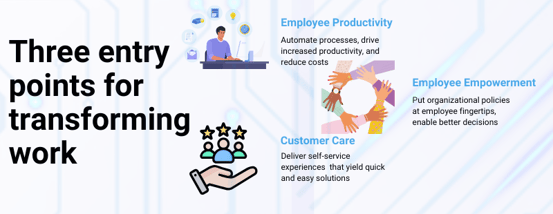
-
Workflow Automation for Operational Efficiency: One of the key pillars of digital labor is workflow automation, and WatsonsX Orchestrate excels in this domain. By automating intricate AI and data science workflows, the platform significantly reduces manual effort, streamlining processes and enhancing operational efficiency. This allows organizations to accomplish more with less, freeing up human resources for high-value tasks.
-
Collaboration for Enhanced Productivity: Digital labor is not about replacing human workers but augmenting their capabilities. WatsonsX Orchestrate fosters collaboration among cross-functional teams, bringing together data scientists, developers, and domain experts. This collaborative environment accelerates problem-solving, decision-making, and innovation, creating a synergistic relationship between digital labor and human expertise.
-
Scalability to Meet Growing Demands: As organizations scale their digital labor initiatives, scalability becomes a critical factor. WatsonsX Orchestrate provides the flexibility to scale horizontally and vertically, ensuring that the platform can seamlessly adapt to the growing demands of AI and data science projects. This scalability is essential for organizations aiming to expand their digital labor capabilities without compromising performance.
-
Model Monitoring and Management for Continuous Improvement: In the era of digital labor, continuous improvement is paramount. WatsonsX Orchestrate includes robust tools for monitoring and managing AI models in production. This ensures that digital labor processes based on AI models deliver consistent and reliable results over time. The platform's capabilities contribute to the iterative refinement of digital labor processes, optimizing outcomes and enhancing overall performance.
-
AI Explainability and Ethical Digital Labor: Transparent digital labor practices are crucial for building trust and ensuring ethical use of AI. WatsonsX Orchestrate provides tools for explaining AI model decisions, addressing the interpretability challenge often associated with complex AI systems. Additionally, the platform includes features for detecting biases, aligning digital labor practices with ethical standards and promoting fairness in decision-making.

There are more than 2,000 activities that make up 800 full-time occupations that are part of knowledge work. However, only 5% of these full-time occupations could be fully automated using existing technology. That means that the 95% of remaining occupations require cognitive abilities.
Benefits for Businesses:
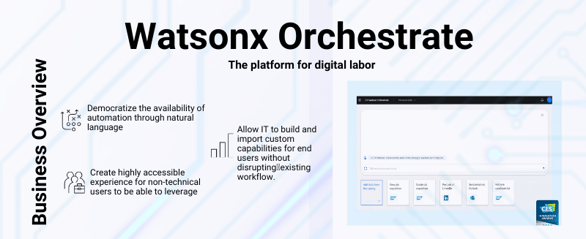
-
Accelerated Time-to-Value: By automating and streamlining AI and data science workflows, organizations can significantly reduce the time it takes to move from ideation to deployment, ultimately accelerating their time-to-value for AI initiatives.
-
Improved Collaboration: The collaborative features of WatsonsX Orchestrate facilitate better communication and knowledge sharing among teams, leading to more effective and impactful AI solutions.
-
Enhanced Governance and Compliance: The platform provides robust governance and compliance features, ensuring that organizations can meet regulatory requirements and maintain a high standard of data ethics.
-
Cost-Efficiency: With the ability to scale and the flexibility of deployment options, WatsonsX Orchestrate helps organizations optimize costs by aligning infrastructure with project requirements.
In the era of AI and data-driven decision-making, IBM WatsonsX Orchestrate stands out as a powerful solution for organizations looking to harness the full potential of their AI and data science initiatives. With its automation capabilities, collaborative environment, and emphasis on ethical AI, WatsonsX Orchestrate is poised to become a key player in the journey towards building intelligent, transparent, and scalable AI solutions. As businesses continue to navigate the complexities of the digital age, platforms like WatsonsX Orchestrate provide the tools needed to turn data into a strategic asset and drive innovation in the ever-evolving landscape of AI.
Gone days, where we had no control/alerts mechanism on the TM1 database, CPU/memory it consumes, react at the nick of the moment before TM1 server crashes.
I am sure all TM1 lovers, administrators and business users who had these experiences in the past would connect to what I am referring to. For all new Planning Analytics users, in earlier versions of TM1/ Planning Analytics, we had little overview on how much on RAM/ memory can a TM1 instance use/utilize or have an inbuilt alter mechanism.
TM1 Database Alert Mechanism:
Issue:
Most of you know, TM1 Server loves memory/RAM, more memory available the better performance/processing you get. Due to the trade-off between the cost and memory availability, there has always been a cap on upper limit on RAM available to TM1 Server.
What is new:
We now have an inbuilt mechanism in Planning Analytics Workspace, wherein we can set certain configuration and look for alters at a different level.
Administrators can now set, database threshold and alter configurations in a single tab on the Database settings page for the individual database in Planning Analytics Administration.
Isn’t that the good news! To use this, Planning Analytics Workspace version must be 2.0.46 or higher. In the previous version of Planning Analytics Administration, it was not possible to apply unique settings for each database, thresholds and alerts were set on separate tabs of a configuration page, but settings were applied to all databases in the environment.
Navigation:
For database settings, go to the Administration page, click Database as shown below.
Click on settings (highlighted), Database Setting, move to Thresholds and alerts.
The administrator can enter values for Warning threshold and Critical threshold and enable alert as different resource usages, as shown below.
The administrator can also set thread auto-refresh time interval.
Wonderful, now you can implement these in your environment, any doubts – we are here to help you for sure! Contact us today to find out how we can help you leverage your data for true business intelligence.
You may also like reading “ Predictive & Prescriptive-Analytics ” , “ Business-intelligence vs Business-Analytics ” ,“ What is IBM Planning Analytics Local ” , “IBM TM1 10.2 vs IBM Planning Analytics”, “Little known TM1 Feature - Ad hoc Consolidations”, “IBM PA Workspace Installation & Benefits for Windows 2016”.
Octane Software Solutions Pty Ltd is an IBM Registered Business Partner specialising in Corporate Performance Management and Business Intelligence. We provide our clients with advice on best practices and help scale up applications to optimise their return on investment. Our key services include Consulting, Delivery, Support and Training. Octane has its head office in Sydney, Australia as well as offices in Canberra, Bangalore, Gurgaon, Mumbai, and Hyderabad.

IBM Planning Analytics (TM1) vs Anaplan
There has been a lot of chatter lately around IBM Planning Analytics (powered by TM1) vs Anaplan. Anaplan is a relatively new player in the market and has recently listed on NYSE. Reported Revenue in 2019 of USD 240.6M (interestingly also reported an operating loss of USD 128.3M). Compared to IBM which has a 2018 revenue of USD 79.5 Billion (there is no clear information on how much of this was from the Analytics area) with a net profit of 8.7 b). The size of global Enterprise Performance Management (EPM) is around 3.9 Billion and expected to grow to 6.0Billion by 2022. The size of spreadsheet based processes is a whopping 60 Billion (Source: IDC)
Anaplan has been borne out of the old Adaytum Planning application that was acquired by Cognos and Cognos was acquired by IBM in 2007. Anaplan also spent 176M on Sales and Marketing so most people in the industry would have heard of it or come across some form of its marketing. (Source: Anaplan.com)
I’ve decided to have a closer look at some of the crucial features and functionalities and assess how it really stacks up.
ScalabilityThere are some issues around scaling up the Anaplan cubes where large datasets are under consideration (8 billion cell limit? While this sounds big, most of our clients reach this scale fairly quickly with medium complexity). With IBM Planning Analytics (TM1) there is no need to break up a cube into smaller cubes to meet data limits. Also, there is no demand to combine dimensions to a single dimension. Cubes are generally developed with business requirements in mind and not system limitations. Thereby offering superior degrees of freedom to business analyst.
For example, if enterprise wide reporting was the requirement, then the cubes may be need to be broken via a logical dimension like region of divisions. This in turn would make consolidated reporting laborious, making data slicing and dicing difficult, almost impossible.
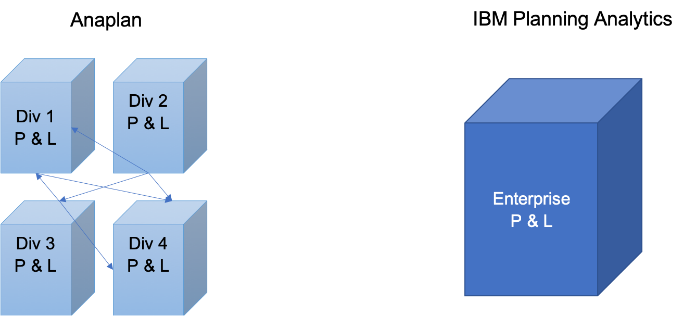
Excel Interface & Integration
Love it or hate it – Excel is the tool of choice for most analyst and finance professionals. I reckon it is unwise to offer a BI tool in today’s world without a proper excel integration. I find Planning Analytics (TM1) users love the ability to use excel interface to slice and dice, drill up and down hierarchies and drill to data source. The ability to create interactive excel reports with ability to have cell by cell control of data and formatting is a sure-shot deal clincher.
On the other hand, on exploration realized Anaplan offers very limited Excel support.


Analysis & Reporting
In today’s world users have come to expect drag and drop analysis. Ability to drill down, build and analyze alternate view of the hierarchy etc “real-time”. However, if each of this query requires data to be moved around cubes and/or requires building separate cubes then it’s counterproductive. This would also increase the maintenance and data storage overheads. You also lose sight of single source of truth as your start developing multiple cubes with same data just stored in different form. This is the case with Anaplan due to the software’s intrinsic limitations.
Anaplan also requires users to invest on separate reporting layer as it lacks native reporting, dashboards and data visualizations.
This in turn results in,
- Increase Cost
- Increase Risk
- Increase Complexity
- Limited planning due to data limitations
IBM Planning Analytics, on the contrary offers out of the box ability to view & analyze all your product attributes and the ability to slice and dice via any of the attributes.
It also comes with a rich reporting, dashboard and data visualization layer called Workspace. Planning Analytics Workspace delivers a self-service web authoring to all users. Through the Planning Analytics Workspace interface, authors have access to many visual options designed to help improve financial input templates and reports. Planning Analytics Workspace benefits include:
- Free-form canvas dashboard design
- Data entry and analysis efficiency and convenience features
- Capability to combine cube views, web sheets, text, images, videos, and charts
- Synchronised navigation for guiding consumers through an analytical story
- Browser and mobile operation
- Capability to export to PowerPoint or PDF
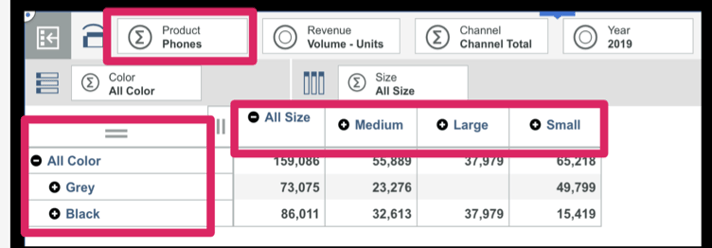
Source : Planning Analytics (TM1) cube
.webp?width=512&name=unnamed%20(2).webp)
Predictive analytics:
Predictive analytics is the practice of extracting information from existing data sets in order to determine patterns and predict future outcomes and trends. A way to predict the future using data from the past.
Predictive analytics brings together advanced analytics capabilities spanning ad-hoc statistical analysis, predictive modelling, data mining, text analytics, optimization, real-time scoring and machine learning. These are tools that help organizations discover patterns within the data and go beyond knowing what has happened to anticipate what is probable to happen next.
- Use historical information to determine patterns.
- Once equipped with these patterns, predictive models are built and are used to forecast possible trends and outcomes.
- Predictive analytics highlights approaching opportunities and potentials for risk to improve the quality of decision-making around upcoming events.
Prescriptive Analytics:
Prescriptive analytics is the use of technology to help businesses make better decisions in handling specific events by factoring in the knowledge of possible constraints, available resources, past performance and current situation.
Prescriptive analytics involves mathematical and computational algorithms and goes beyond predicting future outcomes by also suggesting actions and to benefit from the predictions and showing the implications of each decision option.
Prescriptive analytics seeks to determine the optimized solution or best outcome among different choices depending on current constraints, resources and priorities. Prescriptive analytics uses both descriptive and predictive data to determine a specific action to take.
Prescriptive Analytics capabilities :
Prescriptive Analytics hold below features
- Prescriptive Modelling
- Uses mathematical and computations models
- Optimized solutions
- Continually take in new data to re-predict and re-prescribe
- Automatically improve prediction accuracy and prescribing better decision options
- Visualization
- Prescriptive analytics incorporates both structured and unstructured data
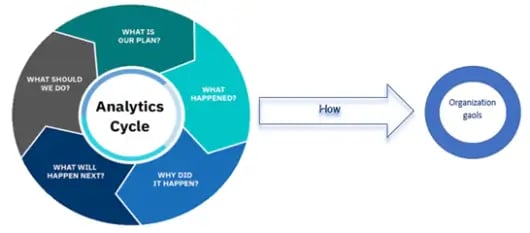
IBM Decision Optimisation is one such solution from IBM.
IBM Decision Optimisation:
IBM Decision Optimisation is a prescriptive analytics solution that enables organisations in commerce, manufacturing, financial services, healthcare, telco, government and other highly data-intensive industries to make better decisions and achieve business goals by solving complex optimisation problems.
IBM Decision Optimisation solves business problems using Mathematical and Constraint programming.
IBM Decision Optimisation solutions provide features that help create optimization models, either using general programming language APIs, like Python, Java or OPL to solve the breadth of optimization models, using proven and powerful optimization engines.
.webp?width=434&name=unnamed%20(4).webp)
IBM Decision Optimisation is an integral part of IBM Watson® Studio, so users can benefit from all data science features of IBM Watson Studio, like access to machine-learning models, the ability to pass output from predictive analytics to the Decision Optimisation engine, access to open notebook features, visualization features and data connectivity options from IBM Watson Studio.
.webp?width=481&name=unnamed%20(3).webp)
Key benefits
- Powerful optimization engines for faster performance
- Quickly build optimization models using your preferred language
- Access to more data science features
Register for our webinar 'Business Decisions and Resource Allocation' to learn how IBM Planning Analytics with Watson and IBMLOG CPLEX work seamlessly together.
IBM Case Study:
Client:
Leading bulk tanker transportation company.
Business challenge:
To transport bulk products safely and profitably, this carrier needs to manage hundreds of constraints on tankers, drivers and cargos. How can it help its planners make optimal routing decisions?
Transformation:
This leading bulk carrier embedded IBM optimization software into its operational systems and developed a sophisticated solution that provides insight to optimize driver and route planning every 10 minutes
Results:
Millions of dollars saved annually by eliminating miles of unnecessary driving.
Millions more dollars saved annually by improving driver retention.
Million-dollar revenue boost achieved by increasing driver productivity.
Click here for more details.
Products
- IBM ILOG® CPLEX® Optimization Studio
- IBM Decision Optimization for Watson Studio
- IBM Decision Optimization Center
- IBM Decision Optimization on Cloud
- IBM ILOG CPLEX Optimizer for z/OS
Organizational Benefits:
- Optimized solutions to solve business problems.
- Greater ease-of-use.
- Comprehensive analytics capabilities
- Movement to the cloud
- Increased adoption beyond financial services
- Overall market growth.
- Open source integration
- A flexible and scalable platform for one-to-many analytics.
Hope you have enjoyed reading this blog as much as I had testing this cool feature; stay tuned for upcoming blogs.
You may also like reading “What is IBM Planning Analytics Local ”, “IBM TM1 10.2 vs IBM Planning Analytics”, “Little known TM1 Feature - Ad hoc Consolidations”, “IBM PA Workspace Installation & Benefits for Windows 2016”.
For more information: To check on your existing Planning Analytics (TM1) entitlements and understand how to upgrade to Planning Analytics Workspace (PAW) reach out to us at info@octanesolutions.com.au for further assistance.
Octane Software Solutions Pty Ltd is an IBM Registered Business Partner specialising in Corporate Performance Management and Business Intelligence. We provide our clients with advice on best practices and help scale up applications to optimise their return on investment. Our key services include Consulting, Delivery, Support and Training.
Octane has its head office in Sydney, Australia as well as offices in Canberra, Bangalore, Gurgaon, Mumbai, and Hyderabad.
To know more about us visit, OctaneSoftwareSolutions.
.jpg?width=512&name=unnamed%20(1).jpg)
This article talks about Business Intelligence and Business Analytics, things in common and about differences between one another. This blog also talks about the paybacks for an organization once these are adopted.
Let’s start ... Though Business Intelligence and Business Analytics sound similar and are being used interchangeably by many, they do have differences.
Business Intelligence ( BI ) :-
Term Business Intelligence, though exist for long, have been used by wider audience from late 90s .
Intelligence with in Business comes from the data being captured. Business Intelligence has been considered as a process to collect, store, maintain, retrieve and interpret data and purpose is to optimize, streamline and smoothen current operations within the Organization. BI helps in making better-informed decisions, improve performance, helps in creating new strategic opportunities for growth, eventually helps to better understand how the business is doing, make better-informed decisions.
In bullet points, BI is:
- A process deals with collecting data, querying, reporting, online analytical processing and alerting.
- The purpose of business intelligence is to support data-driven business decision making.
- BI solutions collect and analyse current and historical, actionable data with the purpose of providing insights into improving business operations.
- Improves and maintains operational efficiency and helps companies increase organizational productivity.
- BI is more concerned with the WHATs and the HOWs(Performance).
- BI Technologies are efficient enough to give insight on what happened in the past / is happening right now in business –If input data to BI systems is real and granular, Organisations would have a much better insight.
- BI refers to set of technologies(DSS) supporting decision-making process by executives, middle management.
- A dashboard gives all required insight needed, also displays data trend – thus helps management in taking right decision at right time to run the businesses effectively.
- BI tools have evolved to become much more intuitive and user-friendly.
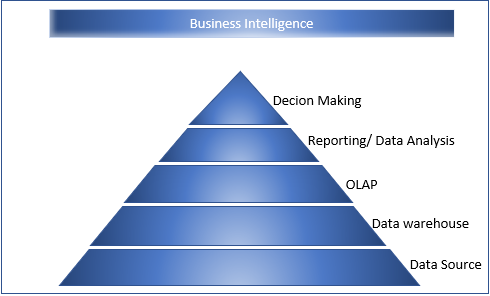
Business Intelligence gives information about the data itself and also provides insights rather than making extra transformations or conversions.
Business Analytics :-
Word, Business Analytics was also in existence for long but became a buzz word in last 10-15 years. Business Analytics is process of exploring data and interpreting data.
- Uses Statistical analysis and predictive modelling
- Business Analytics involves multiple technologies to transforming raw form of data into a meaningful way to convey the solution in best way possible.
- Analyses past data to drive current business and predict future business. Supports management in decision making to change existing business operations and improve productivity.
- Helps management in improving future business operations using current and history data, thus boosting future performance.
- Uses past data to extract insight, drive customer needs and increasing productivity.
- Establishes trends and helps analyse WHY things are happening and provide optimized solutions to solve problem.
- Applies to companies where future growth and productivity is one of their goal.
- Helps in answering WHAT and WHY and also HOW to achieve.
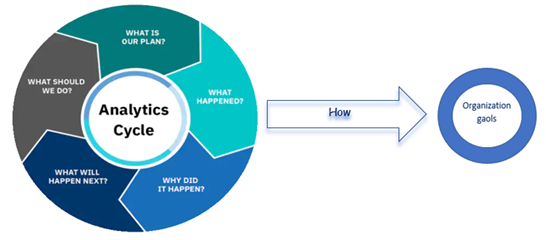
Business Intelligence and Business Analytics:-
Mutual:
- Collects raw data, current and historical data. Transforms raw data into meaningful data.
- Analyses data, helps in identifying pain points, provides alternatives, suggests optimized solutions.
- Data mining helps in finding insights from existing data .
- Rich visualization provides Dashboards.
- Dashboards can be a single point to know how Organization is performing, Areas to focus, historical data visualization and many more.
- Multiple technologies involved.
Focus:
- Business Intelligence focuses on past and current data, Business Analytics also uses past and current data but helps in predicting future trend using existing data.
- Business Intelligence Visualization helps with past and present trend to some extent predict future for the Business Model.
- Business Intelligence uses traditional approach, Business Analytics uses Statistical methods and models.
- Business Analytics though have reporting capability but primarily makes predictions using collected data and offers optimized solutions.
- Business Intelligence focuses on Descriptive and Diagnostic Analytics, Business Analytics is more about Predictive Analytics and Prescriptive Analytics.
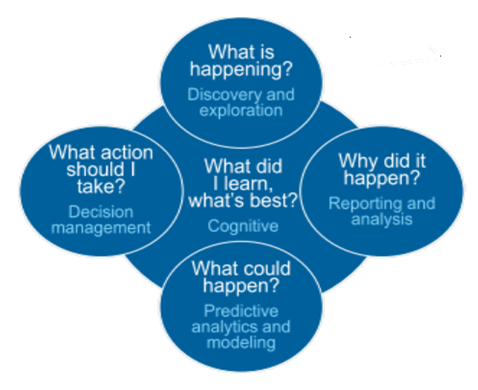
Both Business Intelligence and Business Analytics share activities with in above figure.
Organizational Benefits:
Business Intelligence and Business Analytics helps organization in meeting their Strategic Goals , near-term , long-term goals. These systems provide insights from raw data feed initially to a digestible and understandable information to the Executive management.
Business Intelligence helps giving insight with in Business Models, Analytics focuses on Business process and gives optimized solutions and thus helps decision making.
These systems provide details on business performance, help them answer many questions, some listed below.
- How business is performing.
- Current state
- When compared to last year, last quarter, last five years etc .
- Where is it performing well?
- Where is it not performing well?
- What happened?
- Why is it not performing well ?
- Why not ?
- What happened?
- What now?
- Are we missing Goals, what/How and who, what change needed etc
- What needs to be done ?
- What should change ?
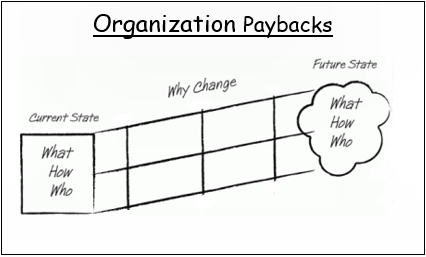
Business Users like, Executive Team, Middle management, Business Analyst can always do ad hoc analysis, ad hoc reporting and predict the impact of change to expected outcomes. Thus, helps management in taking decisions to meet Organizational objects, goals and targets.
Hope you would have enjoyed reading this blog as much as I had testing this cool feature; stay tuned for upcoming blogs.
You may also like reading “ What is IBM Planning Analytics Local ” , “IBM TM1 10.2 vs IBM Planning Analytics”, “Little known TM1 Feature - Ad hoc Consolidations”, “IBM PA Workspace Installation & Benefits for Windows 2016”.
For more Information: To check on your existing Planning Analytics (TM1) entitlements and understand how to upgrade to Planning Analytics Workspace (PAW) reach out to us at info@octanesolutions.com.au for further assistance.
Octane Software Solutions Pty Ltd is an IBM Registered Business Partner specialising in Corporate Performance Management and Business Intelligence. We provide our clients advice on best practices and help scale up applications to optimise their return on investment. Our key services include Consulting, Delivery, Support and Training.
Octane has its head office in Sydney, Australia as well as offices in Canberra, Bangalore, Gurgaon, Mumbai, and Hyderabad.
To know more about us visit, OctaneSoftwareSolutions.


Forward-thinking enterprises are using business intelligence and analytics to navigate through their digital transformation – one that could see them expand both physically and fiscally at a rapid pace.
The ability to harness this data and use it to make business decisions, however, poses challenges. This is particularly true for organisations that haven’t previously had the technology nor the manpower to sift through all the historical data they’ve accumulated in their daily activities.
Think about it – by 2020 it’s predicted there will be 5,200GB of data for every individual on the planet. More importantly, 90% of our current data is ‘unstructured’, drawn from mediums like social media and Internet of Things (IoT) devices.
Harnessing the power of business intelligence and analytics
So how can enterprises take advantage of data analytics? It starts with the three ‘I’s:
- Investment: Collecting and analysing your company data for future activities. You might be surprised what sort of data can be used for predictive modelling purposes to forecast future trends and outcomes.
- Innovation: Harnessing unexplored or raw data to see if your business can create new products or services.
- Improvisation: Parsing business data to find new meaning in it. This can lead to actionable insights that feed into the analytics cycle.

Using data to generate value
More and more businesses are recognising the usefulness of their data, but there’s still a way to go. While more than 80% see AI as a strategic opportunity, most aren’t using data to its full advantage.
These organisations may be using AI to reduce their operational costs or modernise their systems for better business intelligence and data warehousing, but to derive the very best value from your data, you need to be an insights-driven and transformative company.
What is the analytics cycle?
This all feeds into the analytics cycle, of which there is no one-size-fits-all design. IBM, for example, defines the cycle as taking a Planning, Descriptive, Diagnostic, Predictive and Prescriptive approach.
But the bottom line is that every business’s analytics cycle should feed into one central goal: gaining a competitive advantage.
Your cycle might start with identifying a business problem, preparing and analysing the data, A/B testing different solutions and then monitoring the results.
And that model will likely change according to the data you are analysing or the business problem you need to solve. So long as the target is building a more sustainable and competitive business, you’ll be able to use your business intelligence and analytics to generate greater value for your company.
Are you looking to harness the power of data and rise above the competition? Contact Octane Software Solutions today to find out how we can help you derive real business value from your data.

we go the extra mile so you can go the distance|
Got a question? Shoot!
Lorem ipsum dolor sit amet, consectetur adipiscing elit, sed do eiusmod tempor incididunt ut labore et dolore magna aliqua.
.png)
.png)




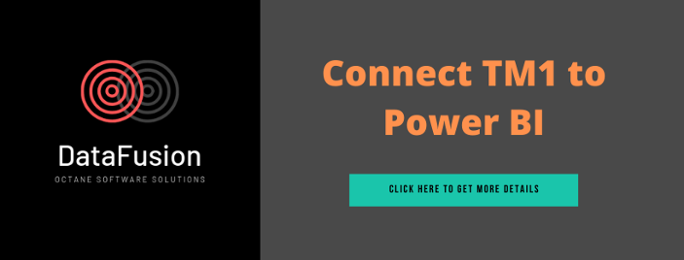


.png?width=673&height=371&name=IBM_Gold-removebg-preview%20(1).png)
Leave a comment